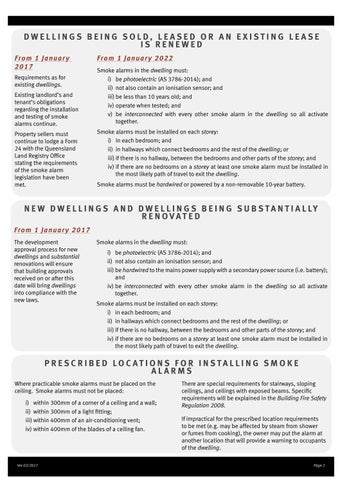FactSheets & Important Information





Fact sheet
Water charging
Lessors are allowed to pass on the full water consumption charges (including bulk water charges) to tenants provided all the minimum criteria have been met.
What are the minimum criteria for water charging?
Lessors are able to pass on the full water consumption charges to tenants if:
• the rental premises are individually metered (or water is delivered by vehicle), and
• the rental premises are water efficient, and
• the tenancy agreement states the tenant must pay for water consumption.
Items a tenant can be charged
A breakdown of water charges is shown below.
Charge as shown on water bill Can tenant be charged?
State Bulk Water Charge
Water Usage Charges
Sewerage Usage Charge (may appear on the bill as fixed or variable)
Fixed Access Charges (including Water Access Charge and Sewerage Access Charge)
*if the above criteria are met
Yes, tenant can be charged*
Yes, tenant can be charged*
No, tenant cannot be charged
Sewerage is not a service charge as defined by the Act and cannot be passed onto the tenant
No, tenant cannot be charged. The lessor must pay all fixed charges for water supply.
What are water efficient rental premises?
A rental premises is considered water efficient if certain water fixtures meet the standards listed in the table below.
Water efficient devices
Internal cold water taps and single mixer taps (excluding bathtub taps and taps for appliances)
Minimum water efficient standard required
A maximum flow rate of nine litres per minute.
Showerheads A maximum flow rate of nine litres per minute.
Toilets
A dual flush function not exceeding six point five (6.5) litres on full flush and three point five (3.5) litres on half flush and a maximum average flush volume of four litres (based on the average of one full flush and four half flushes).
The requirement for taps applies only to internal cold water taps that are installed over a hand basin, kitchen sink or laundry trough (including single mixer taps). The requirement does not apply to other taps in the premises such as bath tub taps, outside taps for the garden, or taps which supply washing machines or dishwashers. These taps are not required to be water efficient.
How can the lessor/agent prove the premises are water efficient?
At the start of the tenancy agreement, the lessor/agent and tenant should negotiate arrangements for water charging and the frequency of charges. The presence of water efficient devices should be noted on the Entry condition report (Form 1a). Lessors/agents should be able to demonstrate the presence of water efficient devices where it may be unclear, such as by providing copies of:
• plumbing reports
• receipts
• packaging
• warranties or instruction manuals for taps and showerheads, etc.
For any water fixtures produced from 2005 onwards, the easiest way to check if they meet the required efficiency standard is to look for products with a WELS rating of three stars or higher. WELS is Australia’s water efficiency labelling scheme which rates fixtures including taps, showerheads and toilets according to water efficiency – the more stars the better. To find out more about the scheme or search the registered product database, visit waterrating.gov.au.
Important points to note:
• tenants and lessors/agents should negotiate obligations at the start of the tenancy and put these in the tenancy agreement, for example, if the lessor is to contribute to water costs.
• it may be helpful to contact your local water provider about average local water consumption. You can find the correct contact details on your latest water bill.
• water billing periods are unlikely to align with tenancy agreements. It’s important that both the tenant and the lessor/agent make note of the water meter readings on the condition reports at the start and end of the tenancy to calculate water consumption.
• lessors will receive the water bill, pay the full amount and provide their tenants with a copy of any water bills or evidence of water consumption to verify the amount to be charged. Tenants will not be billed directly by water supply authorities.
• tenants have one month to pay the agreed amount for water consumption after the lessor provides evidence of the costs to the tenant. The lessor/agent can not require the tenant to pay more than the billable amount, or charge tenants late fees.
• if the tenant and lessor/agent cannot agree about water charges, the RTA’s dispute resolution service may be able to assist.
Further information
For more information contact the Residential Tenancies Authority on 1300 366 311.
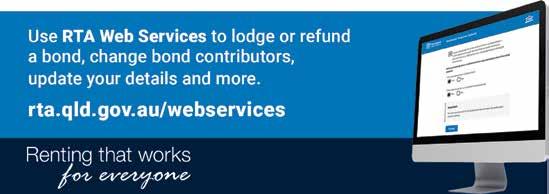
Accessing RTA forms
The RTA’s forms can be obtained electronically or in person at:
• rta.qld.gov.au


• 1300 366 311
• Level 11, Midtown Centre, 150 Mary Street, Brisbane

If you need interpreting assistance to help you understand this information, contact TIS on 13 14 50 (for the cost of a local call) and ask to speak to the Residential Tenancies Authority (RTA).
212 – v14 Aug21
Disclaimer
This fact sheet is prepared for information only The Residential Tenancies and Rooming Accommodation Act 2008 is the primary source on the law and takes precedence over this information should there be any inconsistency between the Act and this fact sheet.

11, Midtown Centre, 150 Mary Street | GPO Box 390 Brisbane Q 4001 | t 1300 366 311 | rta.qld.gov.au
Level
New Smoke Alarm Legislation
Glossary of Terms*
Dwellings - houses, townhouses (Class 1A) and units (Class 2).
Photoelectric - the method the device uses to detect smoke.
Hardwired - connected to the domestic dwelling’s electricity supply. Interconnected - if one smoke alarm sounds all the other smoke alarms will also sound. Interconnection can be wired or wireless.
Substantial - work carried out under a building development approval or the total building works equals 50% of the dwelling over 3 years.
Storey - a space within a building which is situated between one floor level and the floor level or roof above.
* Refer to specific legislation for full definitions.
From 1 January 2017
If you have a specific question or require further clarification, please email SmokeAlarms@qfes.qld.gov.au.
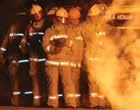
Source documents
• Fire and Emergency Services Act 1990
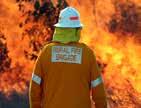

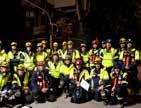
• Building Fire Safety Regulation 2008
• Building Regulation 2006
• National Construction Code 2016

• Australian Standard (AS) 3786-2014
• Land Title Act 1994
FOR EXISTING DWELLINGS
From 1 January 2027
When replacing smoke alarms, they must be of a photoelectric type which complies with Australian Standard (AS) 3786-2014.
Replacing smoke alarms
Existing smoke alarms manufactured more than ten years ago must be replaced. (Note: Smoke alarms should have the date of manufacture stamped on them.)
Smoke alarms that do not operate when tested must be replaced immediately.
Existing hardwired smoke alarms that need replacement must be replaced with a hardwired smoke alarm.
Smoke alarms in all dwellings must:
i) be photoelectric (AS 3786-2014); and

ii) not also contain an ionisation sensor; and
iii) be less than 10 years old; and
iv) operate when tested; and
v) be interconnected with every other smoke alarm in the dwelling so all activate together.
Smoke alarms must be installed on each storey:
i) in each bedroom; and
ii) in hallways which connect bedrooms and the rest of the dwelling; or
iii) if there is no hallway, between the bedrooms and other parts of the storey; and
iv) if there are no bedrooms on a storey at least one smoke alarm must be installed in the most likely path of travel to exit the dwelling.
Smoke alarms must be either hardwired or powered by a nonremovable 10-year battery.
Ver 02/2017 Queensland Fire and Emergency Services © State of Queensland (Queensland Fire and Emergency Services) 2016 All Queensland Fire and Emergency Services material in this document –except any material protected by a trademark, and unless otherwise noted –is licensed under a Creative Commons Attribution 4.0 licence
Information Sheet
.
D WELLINGS BEING SOLD , LEASED OR AN EXISTING LEASE IS RENEWED
From 1 January
2017
Requirements as for existing dwellings.
Existing landlord’s and tenant’s obligations regarding the installation and testing of smoke alarms continue.
Property sellers must continue to lodge a Form 24 with the Queensland Land Registry Office stating the requirements of the smoke alarm legislation have been met.
NEW
From 1 January 2022
Smoke alarms in the dwelling must:
i) be photoelectric (AS 3786-2014); and
ii) not also contain an ionisation sensor; and
iii) be less than 10 years old; and
iv) operate when tested; and
v) be interconnected with every other smoke alarm in the dwelling so all activate together.
Smoke alarms must be installed on each storey:
i) in each bedroom; and
ii) in hallways which connect bedrooms and the rest of the dwelling; or
iii) if there is no hallway, between the bedrooms and other parts of the storey; and
iv) if there are no bedrooms on a storey at least one smoke alarm must be installed in the most likely path of travel to exit the dwelling.
Smoke alarms must be hardwired or powered by a non-removable 10-year battery.
DWELLINGS AND DWELLINGS BEING SUBSTANTIALLY
From 1 January 2017
The development approval process for new dwellings and substantial renovations will ensure that building approvals received on or after this date will bring dwellings into compliance with the new laws.
RENOVATED
Smoke alarms in the dwelling must:
i) be photoelectric (AS 3786-2014); and
ii) not also contain an ionisation sensor; and
iii) be hardwired to the mains power supply with a secondary power source (i.e. battery); and
iv) be interconnected with every other smoke alarm in the dwelling so all activate together.
Smoke alarms must be installed on each storey:
i) in each bedroom; and
ii) in hallways which connect bedrooms and the rest of the dwelling; or
iii) if there is no hallway, between the bedrooms and other parts of the storey; and
iv) if there are no bedrooms on a storey at least one smoke alarm must be installed in the most likely path of travel to exit the dwelling.
P RES c RIBED LO c ATIONS FOR INSTALLING S m O k E ALAR m S
Where practicable smoke alarms must be placed on the ceiling. Smoke alarms must not be placed:
i) within 300mm of a corner of a ceiling and a wall;
ii) within 300mm of a light fitting;
iii) within 400mm of an air-conditioning vent;
iv) within 400mm of the blades of a ceiling fan.
There are special requirements for stairways, sloping ceilings, and ceilings with exposed beams. Specific requirements will be explained in the Building Fire Safety Regulation 2008.
If impractical for the prescribed location requirements to be met (e.g. may be affected by steam from shower or fumes from cooking), the owner may put the alarm at another location that will provide a warning to occupants of the dwelling.
Ver 02/2017 Page 2
REDUCE THE CHAOS: STOP THE BEEP
INCREASE THE SAFETY OF YOUR TENANTS & PROTECT YOUR INVESTMENT

Prepare your portfolio for QLD Smoke Alarm Legislation Compliance
WHY CHOOSE SATS?
• No up front payments
• 10 year warranty on quality photo-electric smoke alarms
• Fully identifiable specialised technicians
• Minimal disruption to your tenants
• Smoke alarm compliance specialists
• Fully tax deductible

1300 41 66 67 sats.com.au
Property Compliance and Safety
General information:
Property Owner obligations
• Provide the property in a reasonable state of cleanliness
• Provide the property in reasonable state of repair at tenancy start
• Allow for “Wear and Tear”
Tenant obligations
• Keep the property in a reasonable state of cleanliness
• Notify the landlord ‘as soon as practicable’ of any damage
• Not intentionally damage premises
• Not use premises for illegal purposes
• Not add or remove fixtures or make any renovation, alteration or addition to the premises
Agent obligation
• Act in the best interest of all parties
• Abide by legislative guidelines
• Minimize risk and avoid liability claims for all parties
Ask your LJ Hooker Property Investment Manager for information about how you can ensure your investment property is compliant. If you are unsure about a particular item, please contact your insurance company to ascertain what the ramifications are should you not address this item.
Areas for consideration:
• Urgent & non urgent repairs
• Wear & tear
• Use of qualified & insured trades
• Smoke Alarms
• Pools / Fencing
• Water Efficiency
• Safety Glass
• Safety Switches/ Electrical
• Pest & building
• Asbestos
Insurance:
• Building
• Landlord, including public liability
• Tenant contents, including public liability
Should you be unsure about a particular item, please contact your local Fair Trading office or insurance company to ascertain what the ramifications are should you not address this item.
It’s important to remember the tenant wants to build a secure home environment in your investment property. It’s a great idea to take a step back and review your property, asking yourself “Would I live here?” if your property needs a little spruce up, your LJ Hooker Property Investment Manager can assist with this too.
Maintenance: Life Span Guidelines
These guidelines are provided to assist property owners to assess the expected life spans of certain maintenance items in a rental property. Please note that these are guidelines only and can vary based on the area, the type of construction and the turnover of tenants.
• Painting (internal): Every 5 years
• Painting (exterior): Varying
• Oven: Every 10 years
• Clean gutters: Check annually
• Electrical wiring: Check every 2–3 years
• Bathroom renovation: Every 20 years
• Hot water system: Every 7 years
• Kitchen renovation: Every 10–15 years
• Pest inspections: Check annually
• Swimming pool: Check filtration equipment — annually
• Replacing floor coverings including carpets: Every 7–10 years
• Smoke alarms: In most states across Australia smoke alarms complying with Australian Standards must be fitted in all rental properties and in accordance with the Building Code of Australia — check alarm and replace batteries annually.
• Houses: Structural checks including safety of balconies, verandahs and roofs — check annually
Every state and region has specific legislation around how a rental property is to be offered and maintained during a tenancy.








